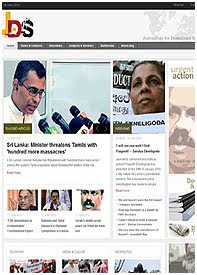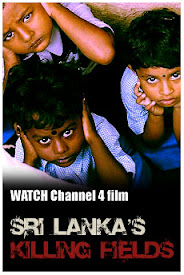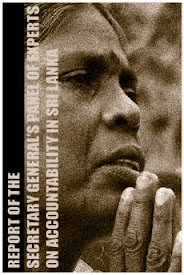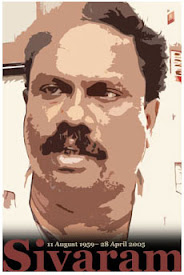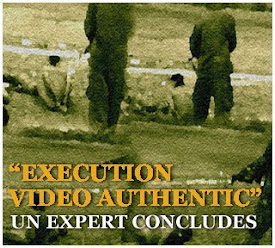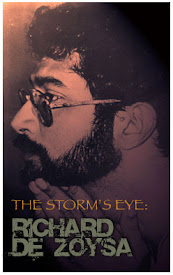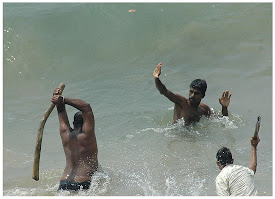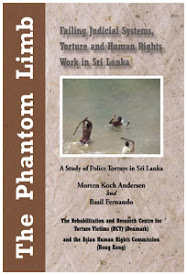
BBC Sinhala
.............................................................................................................................................................................................
They were initially detained by the police at Colombo international airport.
United Kingdom Border Agency chartered a flight to repatriate eight women and forty two men to Sri Lanka.
Most of them are ethnic Tamil asylum seekers.
Fear of detention
Colombo airport officials say the returnees were held by police for questioning.
In June, a group of twenty Sri Lankans were sent back from Britain in an earlier chartered flight.
Human rights group Amnesty International said at least one of the failed asylum seekers had attempted to commit suicide at an airport detention facility in June following death threats he reportedly received.
Amnesty International say that the end of the conflict two years ago had not diminished the risks faced by failed Sri Lankan asylum seekers.
fear of arrest and detention
Amnesty maintains that deportees face arrest and detention upon their return.
However the orgnisation was not able to monitor the fate of earlier returnees.
"We were unable to monitor what happened to them, as we have no access to Sri lanka," Head of Asia of Amnesty International Sam Zarifi told the BBC Sinhala Service.
"Repatriation should be done only after investigating case by case of each individual. This is not the way to send people back," he said.
© BBC Sinhala
Friday, September 30, 2011
Sri Lanka: Returned asylum seekers released
Friday, September 30, 2011
Canada lashes Sri Lanka, summit showdown looms

By David Ljunggren | Reuters
.............................................................................................................................................................................................
Sri Lanka is under increasing Western pressure to probe allegations of war crimes and humanitarian law violations at the end of its war with Tamil Tiger separatists in 2009.
Canadian Foreign Minister John Baird said he had told his Sri Lankan counterpart of Ottawa's "concerns on the lack of accountability for the serious allegations of war crimes, the lack of reconciliation with the Tamil community and with events that have taken place since the end of the civil war".
A diplomatic clash looks likely when Canada and Sri Lanka come face to face in late October at a summit of the 54-member Commonwealth of former British colonies in the Australian city of Perth. Sri Lanka is due to host the summit in 2013.
Canadian Prime Minister Stephen Harper, speaking to ethnic media earlier this month, said he would boycott the 2013 event unless Sri Lanka improved its human rights record and would encourage other Commonwealth leaders to do the same.
"Canada will continue to speak loudly and clearly on behalf of human rights around the world, especially in Sri Lanka," Baird told the House of Commons.
Opposition legislator Jim Karygiannis went even further, asking Harper "to urge the Commonwealth to revoke Sri Lanka's membership until it holds the perpetrators to account and they are judged in international courts".
Sri Lanka's government says it is working hard on reconciliation and is waiting for a report by a national commission of inquiry on the war, due on November 15.
Amnesty International, which dismisses the commission as "fatally flawed", says between 10,000 and 20,000 civilians died in the final months of the 25-year civil war.
Sri Lanka says its troops used only necessary and lawful force and complains that the allegations of war crimes are biased and exaggerated.
© Reuters
Friday, September 30, 2011
Rapes on the rise, Jaffna DS says again
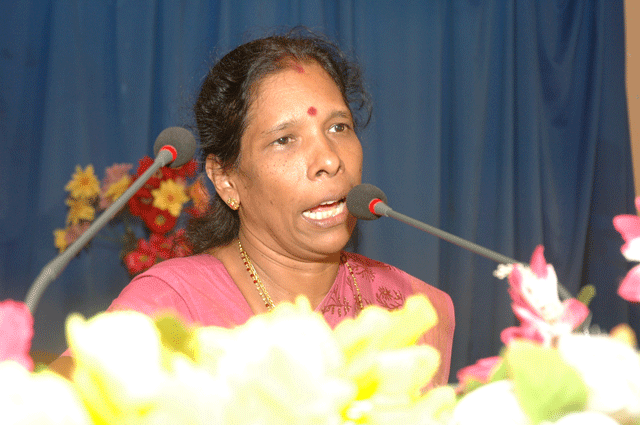
Sri Lanka Mirror
.............................................................................................................................................................................................
Mrs. Sukumar has said that 126 rapes had taken place in the past eight months.
In the latest incident alleged, an EPDP member had victimized a female employee of the Jaffna municipal council.
A politician had assaulted a relative of the woman, who had tried to complain to police regarding the incident.
© Sri Lanka Mirror
Friday, September 30, 2011
Indian Navy and Sri Lankan Navy conclude exercise
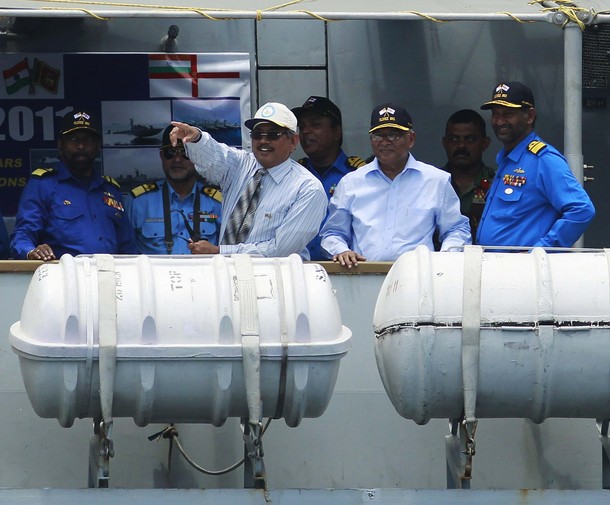
Indian Defence
.............................................................................................................................................................................................
These developments comprised of six Indian states of art vessels of the Eastern command and more than 1200 Indian naval personnel, and 11 Sri Lankan vessels and the same number of personnel was deeply observed by the international community and the diplomatic corps established in Colombo.
These exercises, “SLINEX 11” started on the 19th -24th of September which had the objective of improving interoperability of the two navies. The Sri Lankan Navy declared that the exercise is designed to avail opportunity for the neighboring navies to understudy the basis of joint naval operations and ensure experiences so as to derive from each other.
The decision to enhance mutual defense cooperation and to rely on combine naval exercise was arrived at during the visit of the Defense secretary Pradeep Kumar to Sri Lanka in December 2010.
The first Indo naval exercise took place five years ago. The Eelam War IV which assumed a high dimension since 2006, the exercises which were to be observed yearly had to be abandoned.
The vessel which created a lot of commitments was indigenous multi role frigate with formidable fittings, INS Shivalik. The vessel first launched in April 2010 is an output of indigenous make, US engines and a combination of Russian and Indian armory. The frigate is a component of the Eastern fleet.
The Indian Naval ships launched are INS Ranvijay, INS Shivalik, INS Gharial, INS Khanjar, INS Cheryam and INS Coradiv, along with intergral helicopters and a Dornier Maritime Patrol Aircraft. Rear Admiral HCS Bisht, Flag Officer Commanding Eastern Fleet, Indian Navy, is giving orders to the Indian ships taking part in the exercise.
Despite Operational interactions, sport fixtures, presentations of topics of mutual interest and demonstration by the Sri Lanka Navy had to be framed. On visitations overseas, the Indian naval ships often do community service. In tune with this method, colleagues from other ships went to the ‘Anbu Illam’ and ‘Sivananda Thapobanam’ Orphanages in Trincomalee and executed community service, including painting of dormitories and beds, renewal of electrical wiring, plumbing work and other repair works. The Indian Navy gave out two months supply of provisions, medicines, fans, bulbs, paint and other necessary items. They went ahead creating a room for effective communication with the kids at these orphanages.
The Vietnamese Ambassador to Sri Lanka moved from Colombo to Trincomalee to deliver his wishes to the Indian and Sri Lankan Navy personnel, onboard the INS Shivalik on Thursday.
© Indian Defence
Tuesday, September 20, 2011
Tamil protesters ask for probe into war crimes allegations

AFP | Expatica
.............................................................................................................................................................................................
"We want an international independent investigation" into the war crimes allegations, Kandiah Rajamanoharan, who had travelled from London to Geneva for the day, told AFP.
He added that the organisers were expecting between 5,000 to 10,000 demonstrators.
"And we are all for the independence of our Tamil homeland," he added.
Last week, UN leader Ban Ki-moon sent a report detailing similar allegations against Sri Lankan troops to the Human Rights Council, saying that he alone cannot order an inquiry into the killings but that a forum such as the UN's rights body could do so.
"We expect the United Nations to take up this issue," Rajamanoharan said.
Another demonstrator, Nivethan Nanthakumar who is still in high school and travelled from northern Switzerland, added that "two years after (the end of the conflict) the international community is doing nothing."
"We Tamils will not give up. We will fight for self determination, for freedom," he said.
© AFP
Tuesday, September 20, 2011
SLINEX II: Biggest Indo-Lanka naval exercise underway off Trinco

By Shamindra Ferdinando | The Island
.............................................................................................................................................................................................
SLN headquarters told The Island that the five-day exercise codenamed ‘SLINEX II’ would enhance relations between the two navies and help them share experience, skills and expertise.
An SLN spokesperson said that it was the second exercise since the conclusion of the conflict in May 2009. Defence Secretary Gotabhaya Rajapaksa will visit Trincomalee to meet officers and men involved in the exercise.
The elite Special Boat Squadron of the SLN, too, will take part in the exercise.
Government sources told The Island that in spite of efforts by interested parties to undermine Indo-Lanka relations through a vicious propaganda campaign directed at the SLN over unsubstantiated allegations of attacks on the Tamil Nadu fishing fleet, the two governments had always striven to improve relations between their navies.
The Indian fleet comprises one Destroyer (INS Ravijay), one Frigate (INS Shivlik), one missile corvette ((INS Khanjar), one Landing Ship Tank (INS Gharial), two Fast Attack Craft (Cheriyam and Koradivh) and one maritime patrol aircraft.
Sri Lanka will deploy two Offshore Patrol Vessels (SLNS Sagara and SLNS Samudura), a Fast Missile Vessel (SLNS Nandimihra), two Fast Gun Boats (Prathapa and Ranajaya) and six Fast Attack Craft.
During External Affairs Minister Prof. G. L. Peiris’ three-day visit to New Delhi last May, the two countries agreed to enhance cooperation in the energy sector and to promote dialogue on security and defence issues of relevance to bilateral relations.
Government sources said that both countries were keen to strengthen relations between the two militaries, particularly between the two navies to prevent possible incursions by pirates.
© The Island
Tuesday, September 20, 2011
“We deployed DPU teams inside safe zone”: Rajapaksa confided to US envoy in May 2009

Tamil Net
.............................................................................................................................................................................................
The DPU deployment of SL forces within the safe-zone has been revealed in the Wikileaks documents brought out by the Norwegian paper Aftenposten earlier this year.
“The President then claimed that Government forces would not shell civilian areas, confiding that the Army has Deep Penetration Units (Tamil-speaking agents operating in LTTE-controlled areas) within the safe zone who are attempting to organize people to breach the LTTE earth bunds and allow civilians to escape,” Charge d'Affaires of the US embassy James R. Moore has been quoted as saying in his note to the Secretary of State, with a copy to the White House on 05 May 2009.
SL President Rajapaksa shared this sensitive military secret with the US envoy while his government and its external abettors were engaged in a full-scale propaganda war charging that it was the Tamil Tigers who were carrying out attacks against civilians inside the “safe zone” as their last bid to prevent them from fleeing the war zone in the island’s north.
Sri Lanka’s Defence Ministry went one step further and released a video footage, alleged to have been recorded by the Un-Manned Aerial Vehicle (UAV), in which two men were seen rounding up and shooting at a group of civilians at a coastal area.
“This could well be the work of the DPU desperately aimed at neutralising the mounting international pressure with the President claiming that they too were deployed to carry out attacks,” said a Tamil doctor who served at the makeshift hospital in Mu'l'livaaykkaal in the final days.
The specially raised military’s elite Long Range Reconnaissance Patrol (LRRP) missions, also known as Deep Penetration Units, functioning directly under the Commands of Directorate of Military Intelligence and Special Forces, were believed to have been trained by the special forces of the US and Israel on how to carry out stealth operations inside the enemy territories.
The DPU was known for targeted assassinations of key LTTE members, Tamil National Alliance parliamentarians, humanitarian workers and human rights activists inside the LTTE administered Vanni.
The Sri Lankan forces, especially under the coordination by SL presidential sibling Gotabhaya Rajapaksa and SL Intelligence Chief Major General Kapila Hendawitharana, deployed Deep Penetration Units and paramilitary groups in destabilizing the Ceasefire Agreement between the LTTE and the GoSL, facilitated and monitored by the Norwegian government.
The DPU pin-pointed civilian targets, such as the SLAF massacre that killed 51 school girls and four staff on civil training at Chengchoalai premises. The DPU has been responsible for a number of claymore attacks that claimed the lives of patients and medical personnel travelling in ambulances, priests involved in humanitarian and human rights and Tamil National Alliance parliamentarians.
If Sri Lankan President himself has said that such lethal military units were carrying out operations inside the SL government-designated safe-zone, the importance of such operations and the magnitude of the disasters they could have caused to the war-hit civilians cannot be underestimated.
“Truth may be the first casualty of any war, but it never dies and will somehow surface one day,” commented a Colombo based Tamil lawyer on the revelation of LRRP presence inside the “safe zone”.
“With the Cat is now out of the bag, these accusations and counter-accusations have to be investigated and verified independently, but it is incumbent on the part of the powerful international community, including the UN to create an environment where the living witnesses of the systematic genocide could be testified independently without fear of reprisals,” said the lawyer based in Colombo.
© Tamilnet
Tuesday, September 20, 2011
Sri Lanka's dirty secret

By Stewart Bell | National Post
.............................................................................................................................................................................................
Using a slide projector, the Sri Lanka Army commander gave a detailed accounting of the number of rebels and troops killed and injured in the fighting. But when asked how many civilians had died, he soured.
"No civilian casualties," he said. "Zero."
Two years later, that claim is less credible than ever. While Sri Lanka continues to defend its wartime conduct, a mounting stack of independent reports have concluded that at least 10,000 died, many due to government shelling.
"It would be a mistake for Sri Lankans to gloss over the fact of these deaths; those who hope for a genuine peace and for the preservation of their democracy must eventually look full in the face at a violent past," Gordon Weiss wrote in The Cage: The Fight for Sri Lanka and the Last Days of the Tamil Tigers.
As the United Nations spokesman in Colombo at the time, Mr. Weiss had a unique perch from which to observe the calamitous end of the war, and he has documented his account in a critically acclaimed nonfiction book.
The book's version of what happened is hardly far-fetched. Mr. Weiss argues that a lot of civilians needlessly lost their lives during the final months of fighting and that the government bears its share of responsibility.
For this, the 45-year-old Australian, who was in Toronto this week for a panel discussion hosted by Sri Lankans Without Borders, has been defamed as a rebel apologist by the government and its supporters.
But he is hardly a voice in the wilderness. Investigations by the International Crisis Group, a panel of experts appointed by UN Secretary-General Ban Ki-moon and Amnesty International, among others, have come to the same stark conclusion.
Witnesses to the bloodshed have been coming forward. Videos apparently showing troops executing captives have been broadcast by Britain's Channel 4. The UN Human Rights Council was asked this week to investigate allegations of war crimes and crimes against humanity.
Prime Minister Stephen Harper took a stand last week when he said he supported an independent investigation. He also said he would not attend an upcoming Commonwealth meeting in Sri Lanka unless the country's human rights record improved.
"I think there is momentum building," Mr. Weiss said in an interview. "There have been some fairly momentous reports come out . a series of things that tended to argue that the position that was consistently held by the government of Sri Lanka - that nothing much happened at the end of the war - was an absurd one."
A former journalist and humanitarian worker, Mr. Weiss had spent more than a decade in world hotspots, from Angola and Sudan to Bosnia and Kosovo, when he landed in Colombo in 2006 to help the UN get its message out.
"You have the first experience with Sri Lankans, it's a very friendly one, they're very smiley, and the resorts. There's a whole life that operates at that level," he said. "But dig a little deeper and learn a little bit about Sri Lanka and you realize it's a place that's got multiple tensions running at cross purposes to each other, and all taking place on this hothouse island."
Days after he arrived, he got his first look at those tensions when a suicide bomber tried to assassinate the country's defence secretary. A ceasefire between the government and separatist Tamil Tiger rebels soon collapsed, and a "final war" began.
Both sides thought they would emerge victorious but the Sri Lankan army soon pushed the outgunned rebels, who had initially controlled a third of the country, into an evershrinking enclave.
Trapped in the fighting areas with them were some 300,000 civilians in a no-win situation. The rebels used them as human shields, shooting at those who tried to leave. And the military's use of artillery fire and air strikes caused heavy civilian casualties.
By May 2009, the government forces had corralled the rebels on an isolated beach where the civilians had also fled. The army then moved in for the kill. Among the dead were the rebel leader Velupillai Prabhakaran and his top commanders.
Few mourned the rebel defeat. The Tigers were suicide bombers and assassins who armed children and sent them to frontlines. They also used Toronto, with its large Tamil-Canadian population, as a base for supporting the cause through extortive fundraising and weapons procurement.
But questions about the government's methods have dogged Sri Lanka ever since. Outside agencies that examined the war said Sri Lankan forces had intentionally shelled civilians, hospitals and humanitarian operations, while silencing critics of the operation with abductions and disappearances.
Mr. Weiss said he does not know how many civilians died in the final offensive but that a "reasonable guess" is that 10,000 to 40,000 remain unaccounted for. Amnesty says at least 10,000 died, while the ICG said tens of thousands were killed.
"By denying that its military operations resulted in tens of thousands of civilian deaths, and intimidating and threatening those who challenge that view, the government is effectively closing off the opportunity to open a serious national dialogue on the recent past and needs of the future," the UN panel wrote.
The government of President Mahinda Rajapaksa has so far dismissed calls for an independent inquiry. Instead it launched the Lessons Learnt and Reconciliation Commission, which rights groups say is too flawed to be taken seriously.
"There is a propaganda war going on against Sri Lanka," said Karunarathna Paranawithana, the Sri Lankan Consul-General in Toronto, "so some individuals who work in some international agencies also have joined that." He said Mr. Weiss's book was factually wrong and that the author was not an "authentic observer with regard to the Sri Lankan conflict."
In addition to its fact-finding commission, Sri Lanka has embarked on a program of economic development, as well as resettlement of those displaced by the war and rehabilitation of ex-combatants, many of whom were women and children.
"I think it is going in a positive direction," Mr. Weiss said. "Merely by virtue of the fact that peace has returned, that's brought huge benefits But it doesn't mean at the same time that there aren't important outstanding issues that need to be dealt with."
Perhaps most glaring is that, more than two years after the war ended, the government has not yet proposed any meaningful reforms to address the grievances of minority Tamils that exploded into a quarter century of war.
"In one sense you could say that the initial grievances that gave rise to the insurgency in the first place are still there, they haven't gone away," he said. "They've not been dealt with and simply saying to people, 'Well, we're all one Sri Lanka now' is not a solution."
CONFLICTING REPORTS:
"We are concerned about the situation. That country needs to make progress, not just in terms of what they did against, yeah, the Tigers, but they do have to make advances in terms of political reconciliation, democratic values and accountability. We support the calls of the United Nations Secretary General's representative for an independent investigation ... " - Prime Minister Stephen Harper, Sept. 9, 2011.
" . Amnesty International's conclusions, derived independently from eyewitness testimony and information from aid workers, are that at least 10,000 civilians were killed; that the LTTE [Tamil Tigers] used civilians as human shields and conscripted child soldiers; that the Sri Lankan army shelled areas it knew were densely populated by civilians; and that people trapped by fighting suffered severe and avoidable deprivation of food, water and medical care. These actions constitute serious violations of international law."
- When Will They Get Justice, Amnesty International, Sept. 7, 2011.
"The government of Sri Lanka made every effort to protect civilians in the conflict zone . Despite the clear intent of the government of Sri Lanka and the numerous precautions taken, it was impossible in a battle of this magnitude, against a ruthless opponent actively endangering civilians, for civilian casualties to be avoided."
- Humanitarian Operation Factual Analysis July 2006-May 2009, Ministry of Defence, Sri Lanka, July, 2011.
". I believe that the tactical choices the SLA [Sri Lanka Army] was directed to make, and which contributed to the deaths of so many civilians, warrant a credible judicial investigation of the kind that the Sri Lankan state, in its current guise, is no longer capable of mounting."
- Gordon Weiss, The Cage, May 2011.
"The government says it pursued a 'humanitarian rescue operation' with a policy of zero civilian casualties.
In stark contrast, the panel found credible allegations, which if proven, indicate that a wide range of serious violations of international humanitarian law and international human rights law was committed both by the government of Sri Lanka and the LTTE, some of which would amount to war crimes and crimes against humanity.
Indeed, the conduct of the war represented a grave assault on the entire regime of international law designed to protect individual dignity during both war and peace."
- Report of the Secretary-General's Panel of Experts on Accountability in Sri Lanka, March 31, 2011.
"The Sri Lankan security forces and the Liberation Tigers of Tamil Eelam (LTTE) repeatedly violated international humanitarian law during the last five months of their 30-year civil war.... An international inquiry into alleged crimes is essential ..."
- War Crimes in Sri Lanka, International Crisis Group, May 2010.
© National Post
Tuesday, September 20, 2011
Paradise lost in a secret war

By Antony Loewenstein | The Sydney Morning Herald
.............................................................................................................................................................................................
It was one of the worst massacres of the 21st century but remained largely a secret war, with journalists, human-rights workers and independent observers refused entry to the conflict zone.
The UN Human Rights Council issued only one resolution on Sri Lanka but a dozen against Israel's war in Gaza a few months before.
The decline of American power and rise of an assertive China allowed Colombo far greater leeway to prosecute its own ''war on terror''. This is a victory that is today celebrated and taught by the island's leaders to other countries looking to liquidate an enemy within; brutality and illegal methods are not impediments to the lessons.
A former UN spokesman in Colombo, Gordon Weiss, told ABC TV's Lateline in April that the UN was undeniably partly responsible for not speaking out more forcefully against the violence during the conflict. He left the position ''because I felt that the government had successfully captured the narrative of what happened in this war and that what was missing was an alternative narrative; and I set about writing this book''.
The resultant work is a compelling examination of the island's tortuous history and deeply ingrained racial discrimination. Weiss writes as an involved insider but holds no brief for either side of the decades-long war. He writes with passion and a depth of knowledge that does not shy away from describing the ''government death squads and 'disappearances' [that] had become a feature of public life''.
He sympathetically explains why a separate Tamil homeland was an almost necessary feature of life for a minority who were routinely discriminated against, could not use their own language in professional life and suffered the indignities of a Colombo-led occupation of their land. Although Weiss is not overcritical in the book of his former employer, he encourages a deeper understanding of humanitarian assistance in the modern age.
He likens the UN to a ''fractious parent/teacher meeting'' and a body ''hamstrung by the interests of some of its most powerful members''. He quotes others to condemn the UN - head of the International Crisis Group Louise Arbour said in 2010 that the UN's soft response ''verged on complicity'' and the UN itself has subsequently acknowledged a muted position due to threats from the Sri Lankan authorities.
WikiLeaks cables confirm the US government was aware of the intensity of the fighting in the final months of the war but there was no push by the UN Security Council to warn Sri Lanka. It was a classic case of realpolitik; Sri Lanka holds only strategic importance and no major natural resources. NATO would not target Libya if lettuce was the country's major export.
Weiss's conclusion is a grim prognosis for Sri Lanka, a nation increasingly divided along ethnic lines. He sees the country ''sliding into tyranny''. Many Western nations, including Australia, have remained shamefully silent in the face of ongoing gross abuses, all in the name of favourable trade deals and withholding refugees before they can come to our shores.
The Cage is a courageous document that holds to account the brutality of a rogue state that is all too often simply seen as a beautiful tourist destination.
© The Sydney Morning Herald
Thursday, September 15, 2011
Media workers of leading Tamil newspaper locked out

JDS News
.............................................................................................................................................................................................
However, the Vice President of Sri Lanka Tamil Media Association (SLTMA) has informed media organisations that twenty three staff members have disagreed to resign from Thinakkural.
Thinakkural staff found that they were locked out when they went to office for their routine work on Wednesday morning. Following the shocking incident, staff members lodged a complaint at the Labor Department and the Modera Police station.
Labour Commissioner of Colombo North called Thinakkural editorial staff and Thinakkural administration for an investigation. However, Thinakkural administration did not attend. Therefore, the commissioner who received the complaint from the editorial staff had called for the administration to attend the investigation on Thursday at 10.30 am.
Thinakkural established in 1997, is known to have functioned relatively independently, despite state and state sponsored paramilitary’s threat against its journalists. Recently, Thinakkural’s majority share and good will was bought by Virakeasari, which is another leading Tamil news paper in Sri Lanka. Thinakkural is considered as a prominent voice of Tamil national struggle.
© JDS News
Thursday, September 15, 2011
Sri Lanka: Holy places for minority religions attacked
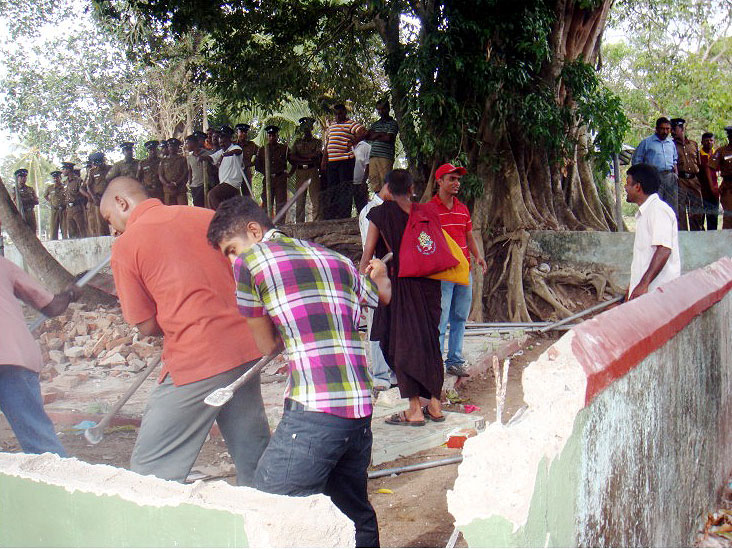
Photo courtesy: Sri Lanka Mirror
JDS News
.............................................................................................................................................................................................
On Saturday the 10th of September, a Muslim shrine in the predominantly Buddhist town of Anuradhapura was demolished by a mob led by Sinhala Voice National Organization, Buddhist Defence Foundation and the Dhamma Vijaya Foundation. On Tuesday, the 13th, Public Relations Minister Mervyn Silva along with a group of followers forcibly entered the Munneswaram Bhadrakali Hindu temple in Puttlam district and disrupted an annual religious festival.
Muslims and Hindus targeted
Both attacks were carried on in broad daylight while police teams accompanied by senior police officers looked on. The police spokesman who has told media that the Munneswaram festival has been banned by courts due to the slaughtering of animals as offerings to deities, denies any knowledge of the Anuradhapura attack. In Anuradhapura the mob uprooted the Muslim shrine close to the monument where Sinhala warrior king Dutugemunu's ashes are believed to be cremated.Muslim leaders in Anuradhapura say that the shrine demolished by the Buddhist organisations has been in place for over one and a half centuries.
In Munneswaram, the annual offering of domesticated animals to the temple, has been a centuries old ritual attended by Buddhists as well as Hindus. Minister Silva who came with a group has forcibly taken the animals away with the help of police. While police claim that the magistrate courts in Chilaw has ordered to stop the slaughter, appeal courts in Colombo has refused to ban the ritual.
Police inaction
However, in both incidents police who were present have not intervened to maintain law and order.
Several powerful ministers in the Rajapaksa government from the Hindu and Muslim communities have not made their position public on these attacks. Sri Lanka Muslim Congress leader Rauff Hakim is also the justice minister while the ministry of religious affairs comes under Prime Minister DM Jayaratne
© JDS
Thursday, September 15, 2011
UN to review its actions during Sri Lanka's war

BBC Sinhala
.............................................................................................................................................................................................
The Secretary General Ban Ki Moon has appointed Thoraya Obaid, former executive director of the UN population fund to lead this review.
The review will be conducted on the recommendation of the Expert Panel appointed by the Secretary General to advice him on possible war crimes in the last months of the war in 2009.
In a letter to the president of the Human Rights Council, the UN Secretary General said “on my Expert Panel’s recommendation that I should conduct a review of actions by the United Nations system during the war in Sri Lanka and its aftermath regarding the implementation of its humanitarian and protection mandates”.
The report released in April 2011 by the Expert Panel, recommended that the Secretary should conduct a comprehensive review of actions by the UN system during the war.
© BBC Sinhala
Thursday, September 15, 2011
Urban legend causing problems in Sri Lanka

Photo courtesy: Tamilnet
By Devi Boerema | Radio Netherlands
.............................................................................................................................................................................................
According to legend, Grease Devils are men covered in oil and grease who wander the streets at night looking for women. The grease and oil makes the devils too slippery to catch on their nocturnal escapades. Sri Lankan folk tales specifically warn widows and single women to lock their doors at night.
The myth
Even without the slippery fluids these men, or devils rather, have been getting away with the nightly attacks. Women from the Tamil and Muslim communities have filed assault cases against what they believe are “Grease Devils”. The creatures seem to wander mostly around military bases.
In Kinniya villagers claim to have seen men fleeing back to the base after an attack. But the Sri Lankan navy has been reluctant to make any arrests. This led to violent clashes between civilians and the navy, in which over 25 civilians were arrested. Similar clashes have taken place in Navanthurai in the Jaffna District and the town of Puttalam in the North West.
“The government of Sri Lanka is very keen to dissuade anyone who wants to investigate the attacks properly and thoroughly or do anything that shows the Sri Lankan military in a bad light. In particular anything that confirms the increased militarisation of the North and the East”, says Fred Carver, who is the director of the Peace & Justice Campaign.
The attacks
It seems that the locals are playing right into the government’s attempt to brush off these claims, by attributing the attacks to the Grease Devils.
Over the years the term Grease Devil has become a common name for men who assault women. Clearly a lot less mythical then vague visitors in the night, but the myth surrounding the name still prohibits the victims from being taken seriously.
“There is clearly something going on, there are people being attacked. To be honest it’s a problem that Sri Lanka has always had [sexual harassment], which is basically what we are talking about here”, says Mr Carver.
“It seems to have gotten worse in recent years and in particular in the North and the East in the aftermath of the war ending.”
Evidence gathered from witness reports all show a connection between the military compounds and the attacks. Women who fall victim to these attacks are mostly from minority groups, not the predominant Sinhalese community.
Fred Carver believes this tells us something about the attackers.
“Most likely they are fairly bored young millitary men who have been trained to believe that the minorities from the local surroundings should not be given any respect. Therefore the number of attacks in these areas has gone up”.
Critique
The Grease Devils sightings tie in with general reluctance in South Asia to report molestation cases. In Sri Lanka, where media is self-censored and critique is met with violence, it’s not easy to accuse government employees of sexual harassment. The myth of the Grease Devil offers locals a way to indirectly vent criticism.
Both parties have their own reasons for keeping the myth of the Grease Devils alive. Meanwhile the tension between civilians and the government is growing stronger and victims have nowhere to go.
“This is the kind of thing that the government’s human rights commission should look into, but the commission is apparently toothless. Also the government shows no interest in investigating these things. You have quotes from various government ministers saying: We’re not going to investigated this, because there is nothing to investigate.”
A new approach
It’s almost unheard of for Sri Lankans to march the streets like they have been doing recently. Over the last few months they have openly showed their discomfort towards the government on many occasions. Some of these protests led to violent outbreaks.
People are genuinely angry about what has been happening in the Northern and Eastern part of Sri Lanka. Another clue that suggests it’s not just a mythical creature from an urban legend which is roaming the streets.
© Radio Netherlands
Thursday, September 15, 2011
Pressure mounts on accountability process

IRIN
.............................................................................................................................................................................................
“If it [a national inquiry] is not a credible process, there will be pressure for some sort of alternate mechanism,” Robert Blake, US Assistant Secretary of State for South and Central Asia, said at the conclusion of a three-day visit to the island nation.
Blake, who met President Mahinda Rajapaksa and ministers, noted, however, that Washington would wait for the release of the final report of the government's Lessons Learnt and Reconciliation Commission (LLRC), appointed by the president in May 2010 to investigate the final days of the war with the Liberation Tigers of Tamil Eelam (LTTE), before passing judgment. The report is due in November.
According to a UN panel report, released in April, both government forces and the separatist LTTE conducted military operations with flagrant disregard for the protection, rights, welfare and lives of civilians and international law during the final months of the war.
Tens of thousands died between January and May 2009, many anonymously, the 196-page report said.
"There needs to be a full credible, independent accounting and accountability of all those individuals who violated international humanitarian law," Blake said.
Earlier, US diplomats said the failure of a national inquiry would increase pressure for an international inquiry that Sri Lanka has so far resisted.
"The LLRC is inquiring into the conflict and its causes and is evolving recommendations to ensure that such a situation never arises again in Sri Lanka. It is critical to wait for that body to finish its deliberations and come up with its conclusions," Minister Mahinda Samarasinghe, head of the Sri Lanka delegation, told the 18th session of the UN Human Rights Council in Geneva on 12 September.
Just two days before Blake's announcement, UN Secretary-General Ban Ki-moon announced he would be forwarding an Advisory Panel report on Sri Lanka to the UN Human Rights Council, a move strongly criticized by Sri Lanka, which said it was only told on 9 September.
"The failure on the part of the High Commissioner to inform the concerned state - Sri Lanka - was wholly inappropriate to say the very least. This, regrettably, may lead to a loss of confidence in the Office of the High Commissioner," Samarasinghe told the Council on 12 September.
Samarasinghe questioned the impartiality of the UN High Commissioner for Human Rights, Navi Pillay. "Today it may be Sri Lanka, but tomorrow it could be any other member state faced with this predicament," he said.
Implementation
Local rights activists say that despite the government's identification of the LLRC as the main mechanism for accountability, many of its interim recommendations had yet to be implemented.
"Significant is that exactly a year after the LLRC made some interim recommendations, they have not been implemented by the government, despite attempts to indicate otherwise by Minister Mahinda Samarasinghe," Ruki Fernando, head of the Human Rights in Conflict Programme at the Law and Society Trust, told IRIN.
Moreover, Fernando pointed out that many of the witnesses giving evidence at the LLRC spoke of the same allegations contained in the UN Secretary-General's Advisory Panel report.
"Many of the testimonies put forward to the LLRC are similar to the allegations contained in the UNSG's panel of experts report."
In April, Ban said he would welcome a mandate from the Human Rights Council, the Security Council or the General Assembly to establish an international inquiry into allegations of possible war crimes.
© IRIN News
Wednesday, September 14, 2011
Top U.S. envoy visits Jaffna

PTI | The Hindu
.............................................................................................................................................................................................
U.S. Assistant Secretary of State for Central and South Asian Affairs, Mr. Blake’s Jaffna tour came after his talks with President Mahinda Rajapaksa and the main Tamil party, the Tamil National Alliance on Monday.
Mr. Blake’s visit to Sri Lanka comes as pressure mounts at a UN Human Rights Council session in Geneva for an international inquiry into alleged war crimes committed during the LTTE conflict.
"He met students and community leaders in addition to government officials to check first hand on the progress of normalisation of civilian life in Jaffna after the end of decades old fighting.
Officials said Mr. Blake at his meeting with Mr. Rajapaksa had inquired about the concerns raised over the increased military presence in Jaffna.
Mr. Rajapaksa had played down concerns saying that the military’s presence in Jaffna was only up to the level of requirement and there was no excess deployment.
© The Hindu
Wednesday, September 14, 2011
Sri Lanka doctors 'complicit in torture'

BBC Sinhala
.............................................................................................................................................................................................
In a detailed report, the BMJ says medical professionals in UK, US, Italy, Israel and Sri Lanka are complicit in torture by failing to blow the whistle.
The report by Medact, a UK based health charity stress the importantance of training doctors on what constitutes torture and support to blow the whistle when they witness it.
The report coincides with the publication of the report into torture of an Iraqi worker allegedly by British soldiers.
Climate of impunity
"The climate of impunity that may have been created, lack of support that may be given, really need to be discussed," said Marion Birch, director of Medact.
The report outlines specific examples where doctors have breached Geneva conventions and medical ethics.
In Sri Lanka, doctors treating torture victims "have to carry out consultations in the presence of police, which breaches the medical confidentiality and can intimidate the doctor," says the report.
The report states that in 2007, the Medical Foundation for the Care of Victims of Torture in the UK (MFCVT) reviewed 130 cases from Sri Lanka, referred to the Foundation in the previous year.
Twenty-four women and 22 men who sought help from the Foundation reported having being raped, states the British Medical Journal (BMJ) quoting MFCVT report.
Sixty eight torture methods
BMJ says that one piece of work by P.Perera, Faculty of Medicine, Department of Forensic Medicine, University of Kelaniya who examined the medical records of 100 victims of torture between 1998 and 2001 held by the Judicial Medical Officer’s Office in Colombo had identified sixty-eight different methods of torture.
While British doctors working in immigrant detention centres seems to fail to examine the immigrants properly, doctors in Israel have "consistently failed to oppose and accurately report" torture, according to the report.
In Italy, says the BMJ, doctors and nurses at the prison where G8 protesters were held in 2001 were accused of "actively participating in mistreatment of detainees."
Injuries not reported
BMJ report states that British doctors working at immigrant detention centres fail to examine properly or report injuries asylum seekers have received before arriving in the UK.
"This can lead not only to their not receiving treatment they need but also to a lack of evidence supporting the case for asylum for those who have been tortured or abused elsewhere.
US doctors have been found to have falsified death certificates for detainees at Abu Ghraib prison in Iraq, psychologists helped develop interrogation techniques at Guantanamo prison, and doctors neglected or concealed evidence of intentional harm inflicted on detainees.
In Italy, says the BMJ, doctors and nurses at the prison where G8 protesters were held in 2001 were accused of "actively participating in mistreatment of detainees."
© BBC Sinhala
Wednesday, September 14, 2011
'Sri Lanka recalls war crimes accused diplomat'

PTI | Zee News
.............................................................................................................................................................................................
The Sankt-Galler Zeitung newspaper and ATS news agency said the information was provided by diplomatic sources, but the missions in Berlin and Geneva did not comment.
Two rights groups last month filed a criminal complaint with Swiss authorities against Dias for alleged war crimes.
The Swiss attorney general's office confirmed it received the complaint filed by the Society for Threatened Peoples and TRIAL (Track Impunity Always) and was examining the case.
The two groups claimed that "there are numerous indications that war crimes were committed" by the 57th division commanded by Dias in the Sri Lankan army's final offensive against Tamil Tiger rebels.
"In particular, during this time, the troops of Jagath Dias carried out massive bombings of civilians and hospitals," they said.
Dias is the deputy ambassador at Sri Lanka's embassy in Berlin, which also handles diplomatic dealings with Switzerland and the Vatican.
© Zee News
Wednesday, September 14, 2011
Sri Lanka: Propaganda wars
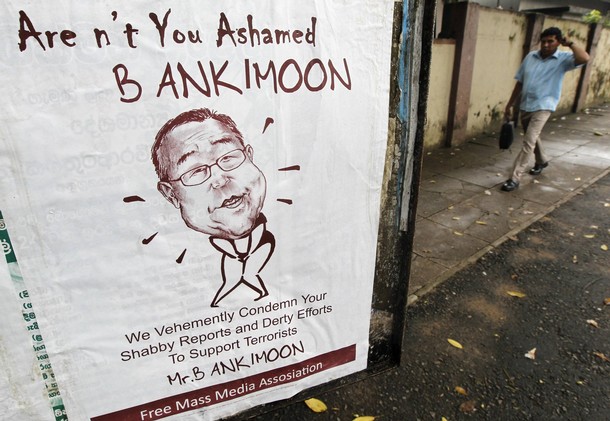
By Sreenivasan Jain | NDTV
.............................................................................................................................................................................................
First, the terms of reportage: We travelled unsupervised in all the civilian areas in the Tamil area of the North of Lanka - Jaffna, Kilinochchi, Mullaitivu, and Vavuniya. We were escorted by the army to the high security zones.
To begin from where it all ended - in a tiny strip of land along the island's northern coast, near the town of Mullaitivu, where the LTTE and the Army staged their final battle. The Army declared it a No Fire Zone in February 2009 and soon it was flooded with civilians trying to escape the onslaught of war. But the LTTE moved in, and the civilians were caught in a deadly crossfire between the Army and the LTTE. Much has been written about this, including a report commissioned by the UN Secretary General which says "The Government shelled on a large scale in three consecutive No Fire Zones". It also indicts the LTTE saying "Despite grave danger in the conflict zone, the LTTE refused civilians permission to leave". And so it is what unfolded here which remains the main prism through which the world is judging the government's post war response.
This high security area has been sealed off to the media since the war but for the first time, the government, to demonstrate they had nothing to hide, allowed us access. We first glimpsed it by air, from the army helicopter, and then by land.
We entered through the tranquil Nandikadal lagoon, where Prabhakaran's body was found. And then into landscape of utter devastation: miles and miles of charred vehicles with which people rushed here, and beyond the shattered remains of the villages of Mulivaikal that fell in the zone.
A full scale investigation of war crimes is beyond the scope of this report but with the sheer scale of destruction it was evident that the blood of innocent has been spilled here, and that no side is blameless.
As if any further proof was needed, we would come across photographs taken by Mathi (name changed on request), someone who lived in the no fire zone, and who barely survived. The images are a powerful timeline of what occurred: people pouring in on vehicles, unabated shelling from both sides, and the nightmare that followed.
And we would also hear voices of survivors in our travels, like an old man in the Manik Farms refugee camp who said the firing was coming from all sides.
We were taken to another devastated town nearby - Puthukkudiyiruppu or PTK, another near deserted museum of war. The Army says the process of demining has to be completed before it can be rebuilt again. PTK is part of the same disturbing geography that finds mention in the report commissioned by the UN Secretary General.
The report says "PTK hospital was hit every day by rocket launchers and... artillery".
As with the No Fire Zone, here again, the Army says they had no option since the LTTE had moved in the hospital compound.
But while that may have been true, as we walked around the hospital, the extent of the shelling seemed unduly severe. Every single room of the building, including the Operating Theatre was in ruins.
Despite this overwhelming evidence both existing and what we witnessed, the Army continued to be ambivalent about civilian lives lost in the No Fire Zones.
The Jaffna Security Forces Commander, Major Gen. Mahinda Hathurusinghe described the reports of civilian deaths as 'some stories'. He said "People are saying various things. Of course we all to have understand war is war. When you fight a war either the enemy dies or you die. That's the game. The government policy had been throughout no casualties, zero casualties and I think that went on very well."
This ambivalence is what has led to the international community demanding answers from Sri Lanka.
But one of the country's most powerful men, Defence Secretary Gotabaya Rajapaksa says Sri Lanka's post war priorities are different. He said "these are allegations without any basis. You can't make these allegations. Imagine what are the more important things for the people of this country. The people of these areas have suffered, these are the more important things. I don't think anybody is interested in us digging up the past. Why should we? "
Forget the past, says the government and instead focus on the successes of refugee rehabilitation, like the winding up the last internal refugee camp at Manik Farms in Vavuniya district.
When we arrived at Manik Farms, we were first given a presentation by the Army, which runs the camp. They claim to have rehabilitated most of the 3,00,000 internally displaced refugees back to their home districts of Vavuniya, Kilinochchi, Mannar, Trincomalee, Jaffna, Batticoloa among others, a significant claim in the raging propaganda war.
But for the 7000-odd refugees left in Manik Farms, it is hard to forget the past. They are from the worst affected areas in and around Mullaitivu and PTK. It has been two years since the war ended and the physical wounds have healed but the painful memories are still raw.
One woman told us "In 2009 my four storied house was demolished by Army personnel. They pulled us out from there. I suffered a lot to reach this place with my family. I had to take my daughter to Mulivaikal as she was injured during shelling."
Another said," My two sons have been detained for the past 3 years. There is no one from my family to earn. I have no one to help. Please release my sons. They are detained in Senapuram. They are in no way related to the LTTE, but the Sri Lankan army still arrested them on suspicion."
But what we would hear again and again is a desire to return home.
One woman said, "We have been in this camp for the past 2 years and 5 months. They told us they will take us back but they didn't. Even if they shift us they will take us to Thimili and not to the place we belong. The Army says there are mines all over our place. We don't believe that."
Her daughter added," We don't feel secure in this camp, we want the Army to escort us to the place where we belong. We own small pieces of land and if the Army allows us we would like to go back and stay there."
Camp life is not easy. The tin roofed huts can turn into ovens in summer. And to find a normal rhythm for children has been hard. But yet there has also been a sense of normal rhythms of life. One man says, "We work as masons, carpenters, and drive cars. That kind of work."
Contrary to the propaganda that these camps are being run as detention centers , there was a freedom to come and go, as long as they carried a permission slip from the camp officials.
But that propaganda has contributed to the premature emptying of these camps, sending people back to homes not fully rebuilt.
We found this again and again, as we travelled outwards from Manik Farms to judge the government's claims on the ground.
On the outskirts of Mullaitivu, in a cluster of homes built after the tsunami, we found a family that had been sent back from Manik Farms, living in a temporary shack, next to their home until the roof was rebuilt.
But there was also resilience - their neighbors, a family of fisher folk, seemed unconcerned - at least they were back after almost a year in a refugee camp, rebuilding their home.
In the village of Vattakachchi, in rural Kilinochchi we found bag loads of gravel being unloaded inside the home of a man who runs a bicycle shop.
The owner says his house fell into ruin while he was in Manik Farms, but he has taken a bank loan to rebuild it himself - perhaps even turn it into a hotel.
Nearby in another home, the man of the house was unwell, the women said they have taken over the rebuilding.
But for the poor in the same village, the hardship is always greater, like a woman we met who says she comes from a less affluent village in a forested area of Ramnathapuram, which is still in ruins. And so since she was sent back from Manik Farms, she now lives with her children in the broken home of an acquaintance.
Speaking to us from the framed window of a room without a roof, she said, "It's tough to manage. I don't have a job. Earlier I had a man. Now I don't. I was working in a shop. Things have been hard since my husband left me and married someone else."
From the poor, we would hear again and again about an Indian veetu or Indian house, a reference to India's offer to build 50,000 low cost homes in the North and East. The construction was contracted to private developers, who would hand over the homes to the government.
But despite that announcement made in June last year, only a few hundred are ready.
We came across one such cluster of 50 houses outside the town of Pallai, an hour's drive from Jaffna. They were simple, airy well lit homes, with a toilet and bath outside. The quality of construction seemed reasonably good. The only problem is the pace of the work.
India says that they will expedite this by getting the Cabinet to clear the entire project which will come at a cost of roughly of Rs. 1,000 crores. They are planning to alter the model, where the construction cost will be remitted directly to the beneficiary who will construct the home themselves.
In the end, it was impossible for us to come away with simple conclusions on the government's claims on resettlement.
But activists assisting the government's refugee re-housing plans say that a combination of people's resilience, the efforts of a host of international and local donor agencies, and the government have ensured that this is one aspect of post -war efforts which have met with some successes.
Much more, of course, needs to be done.
SC Chandrahasan of the Colombo and Chennai based, Organization for Eelam Refugees Rehabilitation (OFERR) told us that, 'There has been a lot of progress made. People have gone back to their areas. People left over in Manik Farm are free to go back, but they have a difficulty in getting back to their own land. They are where the government needs to do more, apart from the material things, is that land should be made available to the poorest of the poor."
As part of the governments focus on the economic hardware of rehabilitation, we saw everywhere mammoth construction activity - roads, buildings, bridges.
And if there is one city that is a model of the government's vision for the Tamil areas it is Kilinochchi.
Once capital of the LTTE's so called Eelam, or separate Tamil homeland, today Kilinochchi is booming - the government says it's all set to receive the benefits of the Southern Lanka.
We saw just on one road, three new banks and a food mall. I remembered visiting this, nine years ago when it was under LTTE control, and coming across the rundown Bank of Tamil Eelam.
When we asked people to compare life today, to life under the LTTE, a man who is a Justice of Peace, and a chicken farmer told us that, "It is better now. There is no LTTE and no guns. If not I would be dead by now. We don't have a problem now. You are talking to us, we don't know who you are, you are interviewing me and I am responding."
In the same market, we ran into an unlikely sight - a businessman from southern Sri Lanka, a car parts salesman.
He shares, "Last four years, we couldn't come here. Only since the last two years we're coming here. Now the area is getting business, people are coming back and resettling. So now we're getting business. Even now the people aren't getting much income. In the future it will be smoother."
But as we would discover, he wasn't the only visitor from the South.
We ran into a group of Sinhala schoolboys in the shattered town of PTK out on a school tour of the North, part of a bizarre phenomenon of war tourism.
They were heading towards Prabhakaran's bunker deep in the jungles near Mullaitivu.
Here we would find other tourists, all Sinhala, wandering through the LTTE chief's secret tunnels, taking in the armored doors and escape routes.
While no tears are shed for Prabhakaran, these are uneasy encounters between the two cultures, Tamil and Sinhala.
And yet in this unlikely setting we came across a Sinhala family who spoke from the heart. A woman, a government employee told us, "When Prabhakaran was alive people were living with fear. They didn't know at what moment they might get killed. I wonder if people, not only in Sri Lanka but those living in other countries, feel the same way about what happened here."
Sincere emotions, except just minutes away there are Tamils of these war torn areas, the sight of tourists wandering through their ruined towns is like rubbing salt in their wounds.
Another landmark on the somewhat surreal war tourism trail is a Sri Lankan Army memorial built in the middle of Kilinochchi.
We met a group of young boys from Negombo, near Colombo.
They said, somewhat in jest that they are on their way to Jaffna, and that if they find a good Tamil girl, they will marry her.
Again, the sentiment may be genuine, but it was too much of a sense of victor and vanquished.
Many say that the path to genuine reconciliation will only be achieved through a political solution.
But the government seems uninterested.
They had ten rounds of talks with Sri Lanka's Tamil parties, but it ended in a deadlock.
The Tamil parties want the government to honor its commitment to devolve power to the provincial councils, similar to state governments, specifically give them powers of land, police and revenues - promises that this government seems in no mood to keep.
The government says that the Tamil parties are divided.
The main party, the Tamil National Alliance is labeled as a proxy for the LTTE, a charge rubbished by Suresh Premachandran, a TNA MP. He said it is "bloody rubbish because you know the LTTE is finished since 2009. Now almost 2 years passed and we have faced several elections. All the elections we have had a landslide victory".
In turn the TNA calls men like Douglas Devananda, of the Eelam People's Democratic Party, who have joined the government and is a minister - a sellout.
Devananda in turn called the TNA - the Tiger National Agents! He said that he is no stooge and that 'the people voted for me. I am the only Tamil leader who got more preference than other Tamil leaders.'
For these parties, India has always been a fallback.
India on its part says it has pushed hard - a recent Parliament statement by the Foreign Minister asking the Sri Lankan government to expedite the devolution of powers, the same message conveyed privately to the Sri Lankan leadership at a number of different levels. But India also has to balance its support of rights for Tamils with the complex balance of power in the subcontinent.
This week, officials from the power ministry flew to Colombo to sign a 500 MW power project in Trincomalee on Sri Lanka's east coast, a joint venture between India's NTPC and the Ceylon Electricity Board.
India is also repairing the strategic Kankesanthurai (KKS) port in northern tip of Lanka, just a stone's throw from the Tamil Nadu coastline, an investment as much strategic as financial.
It is loudly whispered that the Indian projects in the North and East are a counterbalance to China's construction of a port and airport in Hambantota in the South, and a power plant in the Puttalam in the West.
But the greater worry is that for all the pressure India can bring to bear, the Rajapakse's, who were elected from Sri Lanka's Sinhala and deeply Buddhist south, are not at all keen on autonomy.
The President is more nuanced, his brother, Gotabaya, more direct. He has said more than once that devolution is not a priority.
He told us that "there are a lot of other issues that the people at the grassroots level are more interested in. Not so much autonomy and things like that. Because you see they were suffering for so many years. Now it's the time to give that opportunity to bring up their lifestyle."
We were witness to what could well be the defence ministries view of how to change lifestyles in post war Lanka. The general in charge of Kilinochchi, Major General Nandana Udawatta, gave us a detailed power point presentation of the army's activities from promoting fisheries, to distributing tractors, to building homes to screening the World Cup finals.
Sherine Xavier, a Jaffna and Colombo based legal activist says, "Why do you have to have such a large military presence? And also, on top of that, their involvement in civil administration is a question. I'm not saying that the military should be totally absent. We understand that but we won't accept it."
The summer holidays are over in a government school in Jaffna. It was shut for 15 years because of the war, and its proximity to the Palali Air Force Base. But more than 1400 children who attended it betrayed little sign of what it entailed to study in makeshift schools or not study at all. They were - like most young people - excited about their plans for future, telling us that they wanted to be doctors, accountants, teachers, lawyers.
They will grow up in a Lanka without a LTTE, no small thing, but as new freedoms are gained old ones must be preserved.
In the end it comes back to where we began, to the last no fire zone.
As the road through the wreckage winds towards the beach, we would discover the no fire zone's only remaining secret.
Like Prabhakaran's bunker, or the Kilinochchi war memorial, Sri Lanka's last no fire zone is a tourist spot.
You can grab a beer, get some food, and walk down to the beach to see the ship Farah, a Jordanian tanker hijacked by the LTTE in 2006.
The army says it is only open to Army families, but we saw enough people who looked like civilians - Sinhala civilians.
Just a few hundred yards away, the burnt stumps of trees, where 1000's of their fellow Sri Lankans died. Surely as a starting point it could be closed to tourists.
It will demonstrate that the government understands that while the economic hardware of progress connecting the North and South are important, no less important is justice and dignity.
(With inputs from Niha Masih)
© NDTV
Wednesday, September 14, 2011
UN rights panel gets Sri Lanka "war crimes" report

By Louis Charbonneau | Reuters
.............................................................................................................................................................................................
Ban sent the report of his own advisory panel, which was published in April, to the U.N. High Commissioner for Human Rights, Navi Pillay, as well as the U.N. Human Rights Council in Geneva late on Monday, U.N. spokesman Martin Nesirky said.
"While the Secretary-General had given time to the government of Sri Lanka to respond to the report, the government has declined to do so, and instead has produced its own reports on the situation in the north of Sri Lanka, which are being forwarded (too)," Nesirky said in a statement.
Asked what follow-up actions Ban would like to to see, Nesirky said: "This is a matter for the member states of the Human Rights Council to decide."
The New York-based advocacy group Human Rights Watch (HRW) welcomed Ban's move, saying the 47-nation rights council should launch its own investigation into the final phase of the war.
"When a U.N. Panel of Experts report concludes up to 40,000 civilians died amid war crimes, the Human Rights Council should feel compelled to act," said Brad Adams, HRW's Asia director.
"The council should order a full international investigation -- anything less would be a shameful abdication of responsibility," Abrams said in a statement.
Ban's move could lead the European Union to put the issue of Sri Lanka's behavior in the final months of the Sri Lankan government's quarter-century war against Tamil Tiger separatist rebels on the Council's program of work, but no action was likely until next year, diplomats in Geneva said.
'Credible evidence'
After the report was issued in the spring, human rights groups urged Ban and the United Nations to follow up on the panel's findings. Nesirky said at the time that Ban lacked the authority to personally order a full investigation of the final phase of the war in late 2008 and early 2009. [ID:nN25207770]
The Human Rights Council, however, can order such a probe and has done so in relation to the recent violence in Syria and Israel's December 2008-January 2009 assault on the Gaza Strip.
Sri Lanka's government set up its own investigation panel, which U.N. diplomats and rights groups have said would be neither independent nor credible.
The report of Ban's advisory panel said that as many as 40,000 civilians likely died in the government's final battles against the Liberation Tigers of Tamil Eelam (LTTE), who had holed up along a narrow strip of land in northeastern Sri Lanka with hundreds of thousands of civilians as human shields.
It said there was "credible evidence" the Sri Lankan government was guilty of war crimes, an allegation the country's leadership has repeatedly rejected.
The U.N. report specifically accused the government of widespread shelling including targeting field hospitals, denying humanitarian aid, and committing rights violations against people inside and outside the conflict zone.
Ban's panel blamed both sides for deaths. But the elimination of the LTTE's leadership by the government and its definitive defeat of the insurgency in May 2009 meant that only government forces would be held to account in any inquiry.
© AlertNet
Wednesday, September 14, 2011
UN under pressure to re-examine Sri Lanka 'abuses'

BBC News
.............................................................................................................................................................................................
The alleged abuses took place in the final stages of the civil war in 2009.
A report commissioned by UN Secretary General Ban Ki-moon says that both sides committed violations.
An earlier council session on Sri Lanka stopped short of condemning violations and congratulated the government on bringing the civil war to an end.
That was a move that was harshly criticised by human rights groups.
The BBC's Imogen Foulkes in Geneva says that Sri Lanka is not formally on the agenda of this Human Rights Council session.
But our correspondent says that if, as expected, Mr Ban's report lands on the desks of council member states in the next day or two, the pressure on them to act will be immense.
The report - compiled by a panel of UN human rights experts - documents widespread violations committed by both sides during the closing stages of Sri Lanka's conflict with Tamil Tiger rebels.
Allegations of summary executions, the shelling of hospitals and the use of civilians as human shields would, if proved true, the report says, constitute war crimes and crimes against humanity.
Sri Lanka has reacted angrily to the possibility of being debated once again at the Human Rights Council - its government is particularly irritated that Ban Ki-moon's report recommends an independent investigation into the alleged violations, something the council could authorise.
Sri Lanka has set up its own Lessons Learnt and Reconciliation Commission to address grievances - but human rights groups say that body is biased in favour of the government and is deeply flawed.
Earlier on Monday, UN High Commissioner for Human Rights (UNHCR) Navi Pillai said that anti-terror measures adopted by member states had frequently been designed "with insufficient regard for human rights".
She said that Sri Lanka was an example of states "undermining rights to combat terrorism... And fostering a culture of diffidence and discrimination".
In Sri Lanka, "the response of successive governments over the years has undermined independent institutions, human rights and the rule of law", she said.
But Plantations Minister Mahinda Samarasinghe - who is in Geneva on behalf of the Sri Lankan government - denounced the UNHCR as being "biased... and departing from well-established principles and procedures".
He said that the government had already taken measures to improve the rights situation.
© BBC News
Tuesday, September 13, 2011
UN Sri Lanka report sent to human rights council

AFP | Google News
.............................................................................................................................................................................................
Ban has said that he alone cannot order an inquiry into the killings during a final offensive against Tamil separatists in 2009 - which the Sri Lankan government has strongly denied - but that a forum such as the Human Rights Council could do so.
UN spokesman Martin Nesirky said the report had been sent to the Human Rights Council and the UN High Commissioner for Human Rights, on Monday.
A panel of experts named by Ban said in April that the Sri Lankan army killed most of the tens of thousands of civilian victims of a final offensive against Tamil separatists in 2009 but both sides may be guilty of war crimes.
The panel's report -- angrily opposed by the Sri Lankan government -- painted a barbarous picture of the offensive on the Tamil enclave in the north of the island that ended a three-decade war with the Liberation Tigers of Tamil Eelam (LTTE).
"The Sri Lankan Government has been informed of the secretary general?s decision to share the report with the council and the high commissioner," said Nesirky in a statement.
"While the secretary general had given time to the government of Sri Lanka to respond to the report, the government has declined to do so, and instead has produced its own reports on the situation in the north of Sri Lanka, which are being forwarded along with the panel of experts report."
Nesirky told AFP that Ban had not made a recommendation calling for an international inquiry. "The secretary general is simply sending the report. Its for members to decide how to respond to it."
Hospitals, UN centers and Red Cross ships were deliberately shelled by government forces, prisoners shot in the head and women raped during the 2009 offensive, the panel said. LTTE leaders used 330,000 civilians as a human shield and deliberately shot those who tried to escape.
"Tens of thousands lost their lives from January to May 2009, many of whom died anonymously in the carnage of the final few days," said the three-member panel led by former Indonesian attorney general Marzuki Darsman.
"Most civilian casualties in the final phases of the war were caused by government shelling," the report added.
Sri Lanka has slammed the UN report as "biased" and launched a major international campaign against it. While the United States and other western nations have backed calls for an inquiry, diplomats said Sri Lanka would call on Asian allies such as China to help block any action at the rights council.
Sri Lanka complained about the move to send it to the rights council before Ban's spokesman even made the official announcement.
Sri Lanka Minister of Plantation Industries Mahinda Samarasinghe claimed that at a briefing on Friday UN human rights chief Navi Pillay "had informed a group of countries that a decision had been taken by the office of the United Nations secretary general to transmit the report" to the Geneva-based rights council.
"The failure on the part of the High Commissioner to inform the concerned state -- Sri Lanka -- was wholly inappropriate to say the least," the minister told the Human Rights Council.
The UN also said Thoraya Obaid, a former head of the UN Population Fund, would review the actions of the United Nations in Sri Lanka during the offensive after the panel also criticized UN decision-making.
© AFP
This site is best viewed with firefox

Search
Is this evidence of 'war crimes' in Sri Lanka?
Archive
- ► 2010 (1312)
- ▼ 2011 (687)
Links
- Reporters Sans Frontières
- Media Legal Defence Initiative
- International Press Institute
- International News Safety Institute
- International Media Support
- International Freedom of Expression eXchange
- International Federation of Journalists
- Committee to Protect Journalists
- Asian Human Rights Commission
- Amnesty International
